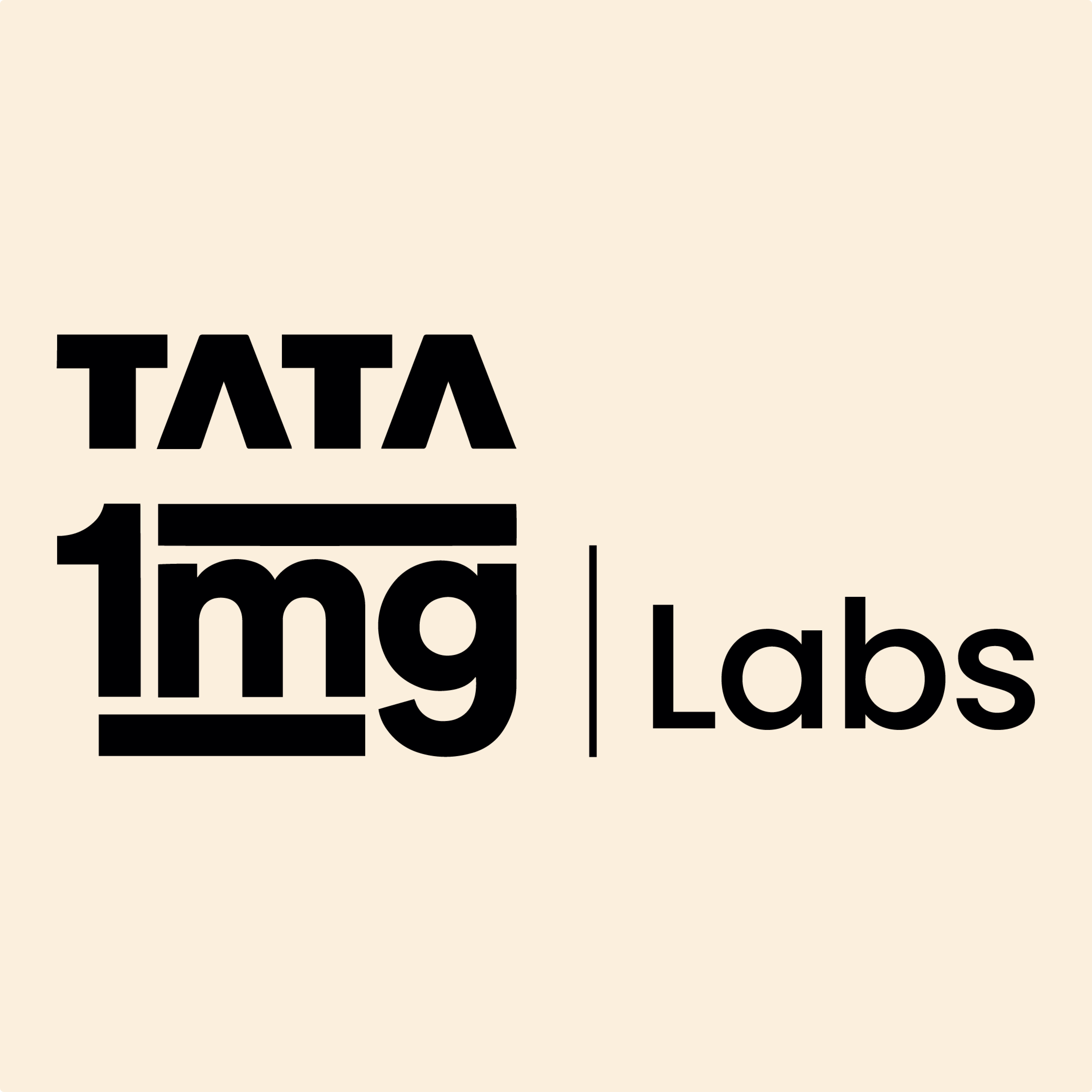
Complete Blood Count With NLR near me in Noida
Understanding Complete Blood Count With NLR in Noida
What is Complete Blood Count With NLR in Noida?
The Complete Blood Count With NLR test is advised when a doctor suspects an underlying condition that might affect immune function or when individuals are presented with symptoms such as unexplained fever, persistent fatigue, or signs of infection. It is done to monitor chronic conditions, or assess recovery from illnesses. This test can help in identifying conditions such as infections, inflammation, and certain types of cancer, as well as in evaluating overall immune system function. Additionally, It is also used in monitoring the progression of certain diseases or the effectiveness of treatments that could affect blood counts.
No special preparation is required before undergoing the Complete Blood Count With NLR. Eat and drink as per your normal routine.
What does Complete Blood Count With NLR measure?
Contains 22 testsThe Complete Blood Count With NLR measures various key aspects of your blood to evaluate your overall health and immune system function. The CBC component of the test assesses the number and types of blood cells. It provides information on red blood cell count, hemoglobin levels, hematocrit, and platelet count. The NLR specifically calculates the ratio of neutrophils (a type of white blood cell involved in fighting infections and inflammation) to lymphocytes (another type of white blood cell that plays a crucial role in immune responses). By examining the balance between these two types of white blood cells, the NLR helps to identify signs of systemic inflammation or immune system stress, offering insights into various health conditions such as infections, chronic inflammatory diseases, and certain cancers.

Differential Leukocyte Count
There are five types of WBCs: neutrophils, lymphocytes, monocytes, eosinophils, and basophils. A Differential Leukocyte Count test measures the percentage of each type of WBC in the blood. Leukocytes or WBCs are produced in the bone marrow and defend the body against infections and diseases. Each type of WBC plays a unique role to protect against infections and is present in different numbers.
Know more about Differential Leukocyte Count
This further contains
- Differential Neutrophil Count
- Differential Lymphocyte Count
- Differential Monocyte Count
- Differential Eosinophil Count
- Differential Basophil Count

Total Leukocyte Count
The Total Leukocyte Count test measures the numbers of all types of leukocytes, namely neutrophil, lymphocyte, monocyte, eosinophil, and basophil, in your blood. Leukocytes or WBCs are an essential part of our immune system. These cells are produced in the bone marrow and defend the body against infections and diseases. Each type of WBC plays a unique role to protect against infections and is present in different numbers.
Know more about Total Leukocyte Count

Mean Platelet Volume
An MPV test measures the average size of the platelets in your blood. Platelets are disk-shaped tiny cells originating from large cells known as megakaryocytes, which are found in the bone marrow. After the platelets are formed, they are released into the blood circulation. Their average life span is 7-10 days.
Platelets help stop bleeding whenever there is an injury or trauma to a tissue or blood vessel by adhering and accumulating at the injury site, and by releasing chemical compounds that stimulate the gathering of more platelets. After these steps, a loose platelet plug is formed at the site of injury, and this process is known as primary hemostasis. These activated platelets support the coagulation pathway that involves a series of steps including the sequential activation of clotting factors; this process is known as secondary hemostasis. After this, there is a formation of fibrin strands that form a mesh incorporated into and around the platelet plug. This mesh strengthens and stabilizes the blood clot so that it remains in place until the injury heals. After healing, other factors come into play and break the clot down so that it gets removed. In case the platelets are not sufficient in number or are not functioning properly, a stable clot might not form. These unstable clots can result in an increased risk of excessive bleeding.
Know more about Mean Platelet Volume

Mean Corpuscular Volume
The Mean Corpuscular Volume test measures the average size of your red blood cells, which carry oxygen through your body. This test tells whether your RBCs are of average size and volume or whether they are bigger or smaller.
Know more about Mean Corpuscular Volume

Mean Corpuscular Hemoglobin
An MCH test measures the average amount of hemoglobin in a single red blood cell (RBC). Hemoglobin is an iron-containing protein in RBCs, and its major function is to transport oxygen from the lungs to all body parts. This test provides information about how much oxygen is being delivered to the body by a certain number of RBCs.
Know more about Mean Corpuscular Hemoglobin

Mean Corpuscular Hemoglobin Concentration
An MCHC test measures the average amount of hemoglobin in a given volume of RBCs. MCHC is calculated by dividing the amount of hemoglobin by hematocrit (volume of blood made up of RBCs) and then multiplying it by 100.
Know more about Mean Corpuscular Hemoglobin Concentration

Absolute Leucocyte Count
The Absolute Leucocyte Count test measures the total number of white blood cells (leucocytes) in the given volume of blood. It examines different types of white blood cells such as neutrophils, lymphocytes, monocytes, basophils and eosinophils. These cells tell about the status of the immune system and its ability to fight off infections and other conditions like inflammation, allergies, bone marrow disorders etc.
Know more about Absolute Leucocyte Count
This further contains
- Absolute Eosinophil Count
- Absolute Neutrophil Count
- Absolute Basophil Count
- Absolute Lymphocyte Count
- Absolute Monocyte Count

Red Blood Cell Count
The Red Blood Cell Count test measures the total number of red blood cells in your blood. RBCs are the most abundant cells in the blood with an average lifespan of 120 days. These cells are produced in the bone marrow and destroyed in the spleen or liver. Their primary function is to help carry oxygen from the lungs to different body parts. The normal range of RBC count can vary depending on age, gender, and the equipment and methods used for testing.
Know more about Red Blood Cell Count

Platelet Count
The Platelet Count test measures the average number of platelets in the blood. Platelets are disk-shaped tiny cells originating from large cells known as megakaryocytes, which are found in the bone marrow. After the platelets are formed, they are released into the blood circulation. Their average life span is 7-10 days.
Platelets help stop the bleeding, whenever there is an injury or trauma to a tissue or blood vessel, by adhering and accumulating at the injury site and releasing chemical compounds that stimulate the gathering of more platelets. A loose platelet plug is formed at the site of injury and this process is known as primary hemostasis. These activated platelets support the coagulation pathway that involves a series of steps, including the sequential activation of clotting factors; this process is known as secondary hemostasis. After this step, there is a formation of fibrin strands that form a mesh incorporated into and around the platelet plug. This mesh strengthens and stabilizes the blood clot so that it remains in place until the injury heals. After healing, other factors come into play and break the clot down so that it gets removed. In case the platelets are not sufficient in number or not functioning properly, a stable clot might not form. These unstable clots can result in an increased risk of excessive bleeding.
Know more about Platelet Count

PDW
The PDW test reflects variability in platelet size, and is considered a marker of platelet function and activation (clot formation in case of an injury). This marker can give you additional information about your platelets and the cause of a high or low platelet count. Larger platelets are usually younger platelets that have been recently released from the bone marrow, while smaller platelets may be older and have been in circulation for a few days. Higher PDW values reflect a larger range of platelet size, which may result from increased activation, destruction and consumption of platelets.
Know more about PDW

Hb (Hemoglobin)
An Hb (Hemoglobin) test measures the concentration of hemoglobin protein in your blood. Hemoglobin is made up of iron and globulin proteins. It is an essential part of RBCs and is critical for oxygen transfer from the lungs to all body tissues. Most blood cells, including RBCs, are produced regularly in your bone marrow. The Hb test is a fundamental part of a complete blood count (CBC) and is used to monitor blood health, diagnose various blood disorders, and assess your response to treatments if needed.
Know more about Hb (Hemoglobin)

Hematocrit
The Hematocrit test measures the proportion of red blood cells (RBCs) in your blood as a percentage of the total blood volume. It is a crucial part of a complete blood count (CBC) and helps in assessing your blood health. RBCs are responsible for carrying oxygen from the lungs to different parts of the body. The hematocrit test provides valuable information about your blood's oxygen-carrying capacity.
Higher-than-normal amounts of RBCs produced by the bone marrow can cause the hematocrit to increase, leading to increased blood density and slow blood flow. On the other hand, lower-than-normal hematocrit can be caused by low production of RBCs, reduced lifespan of RBCs in circulation, or excessive bleeding, leading to a reduced amount of oxygen being transported by RBCs. Monitoring your hematocrit levels is essential for diagnosing and managing various blood-related disorders.
Know more about Hematocrit

RDW CV
The RDW CV test which is part of red cell indices, helps identify characteristics of red blood cells. RDW (red cell distribution width) measures the variations in the sizes of red blood cells, indicating how much they differ from each other in a blood sample. RDW is expressed as RDW-CV, a coefficient of variation. A higher RDW may suggest more variation in red cell sizes, while a lower RDW indicates more uniform red cell sizes.
Know more about RDW CV

Neutrophil Lymphocyte Ratio
The Neutrophil Lymphocyte Ratio test measures two types of white blood cells in your blood: neutrophils and lymphocytes. Neutrophils help fight infections, especially bacterial ones, while lymphocytes are important for fighting viral infections and keeping the immune system balanced. The NLR is calculated by dividing the number of neutrophils by the number of lymphocytes. A high NLR can suggest inflammation, infection, or stress in the body, while a low NLR might indicate a healthy immune system or, in some cases, a weak immune response. This test can give doctors useful information to help assess individuals overall health.
Know more about Neutrophil Lymphocyte Ratio
Answers to Patient Concerns & Frequently Asked Questions (FAQs) about Complete Blood Count With NLR in Noida
Frequently Asked Questions about Complete Blood Count With NLR in Noida
Q. What is the Complete Blood Count With NLR test?
Q. What is the best time to take the Complete Blood Count With NLR test?
Q. When should I get the CBC blood test with NLR?
Q. How is the complete blood count with NLR test performed?
Q. Is there any risk associated with the Complete Blood Count With NLR test?
Q. Can I schedule the Complete Blood Count With NLR test online in Noida near me?
Q. Is home sample collection facility available for the Complete Blood Count With NLR test in Noida with Tata 1mg Labs?
Q. How can I schedule the Complete Blood Count With NLR test with Tata 1mg Labs in Noida?
Q. What is the price of the Complete Blood Count With NLR test at Tata 1mg Labs in Noida?
Q. What is the estimated turnaround time for the results of the {test-name} test in Noida?
Book a Complete Blood Count With NLR test at home near me





Other tests










